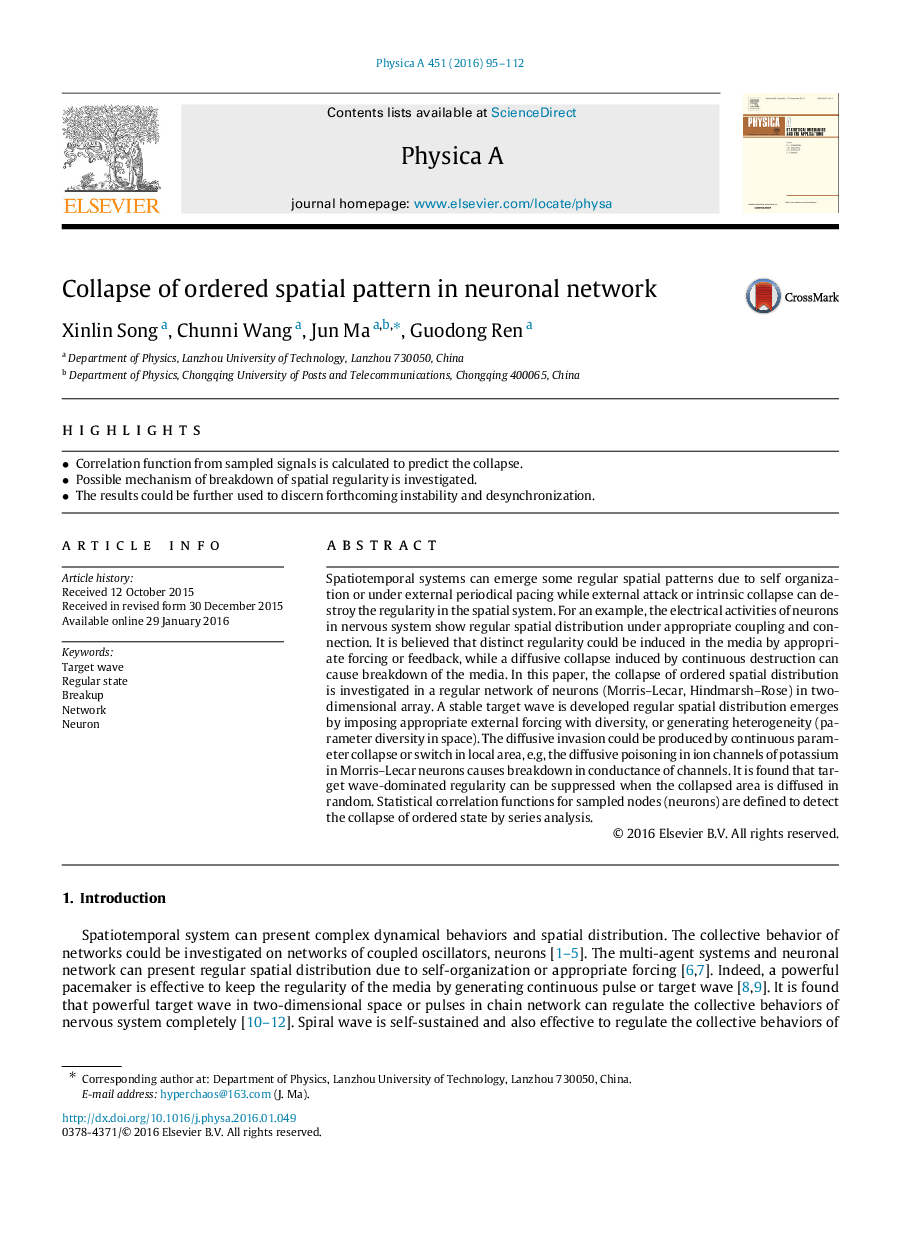| Article ID | Journal | Published Year | Pages | File Type |
|---|---|---|---|---|
| 976625 | Physica A: Statistical Mechanics and its Applications | 2016 | 18 Pages |
•Correlation function from sampled signals is calculated to predict the collapse.•Possible mechanism of breakdown of spatial regularity is investigated.•The results could be further used to discern forthcoming instability and desynchronization.
Spatiotemporal systems can emerge some regular spatial patterns due to self organization or under external periodical pacing while external attack or intrinsic collapse can destroy the regularity in the spatial system. For an example, the electrical activities of neurons in nervous system show regular spatial distribution under appropriate coupling and connection. It is believed that distinct regularity could be induced in the media by appropriate forcing or feedback, while a diffusive collapse induced by continuous destruction can cause breakdown of the media. In this paper, the collapse of ordered spatial distribution is investigated in a regular network of neurons (Morris–Lecar, Hindmarsh–Rose) in two-dimensional array. A stable target wave is developed regular spatial distribution emerges by imposing appropriate external forcing with diversity, or generating heterogeneity (parameter diversity in space). The diffusive invasion could be produced by continuous parameter collapse or switch in local area, e.g, the diffusive poisoning in ion channels of potassium in Morris–Lecar neurons causes breakdown in conductance of channels. It is found that target wave-dominated regularity can be suppressed when the collapsed area is diffused in random. Statistical correlation functions for sampled nodes (neurons) are defined to detect the collapse of ordered state by series analysis.
